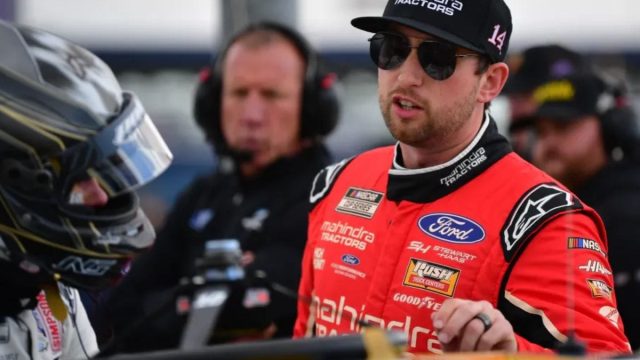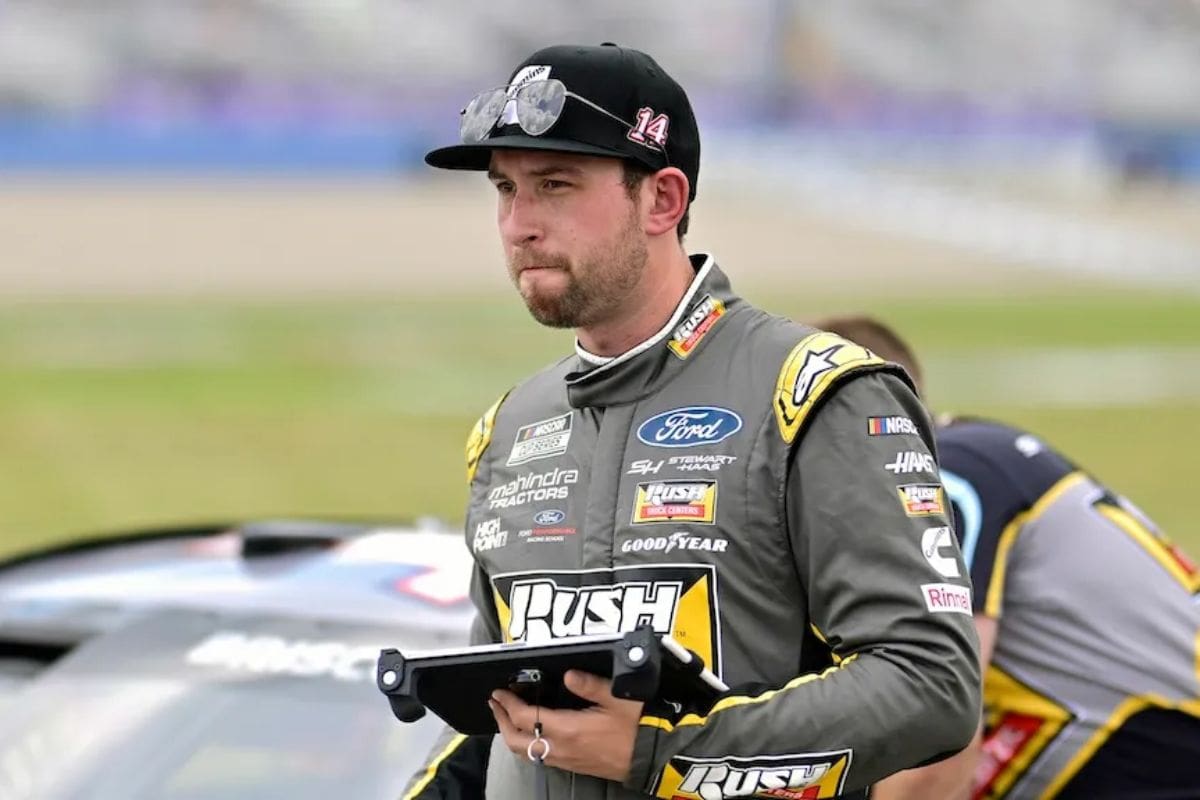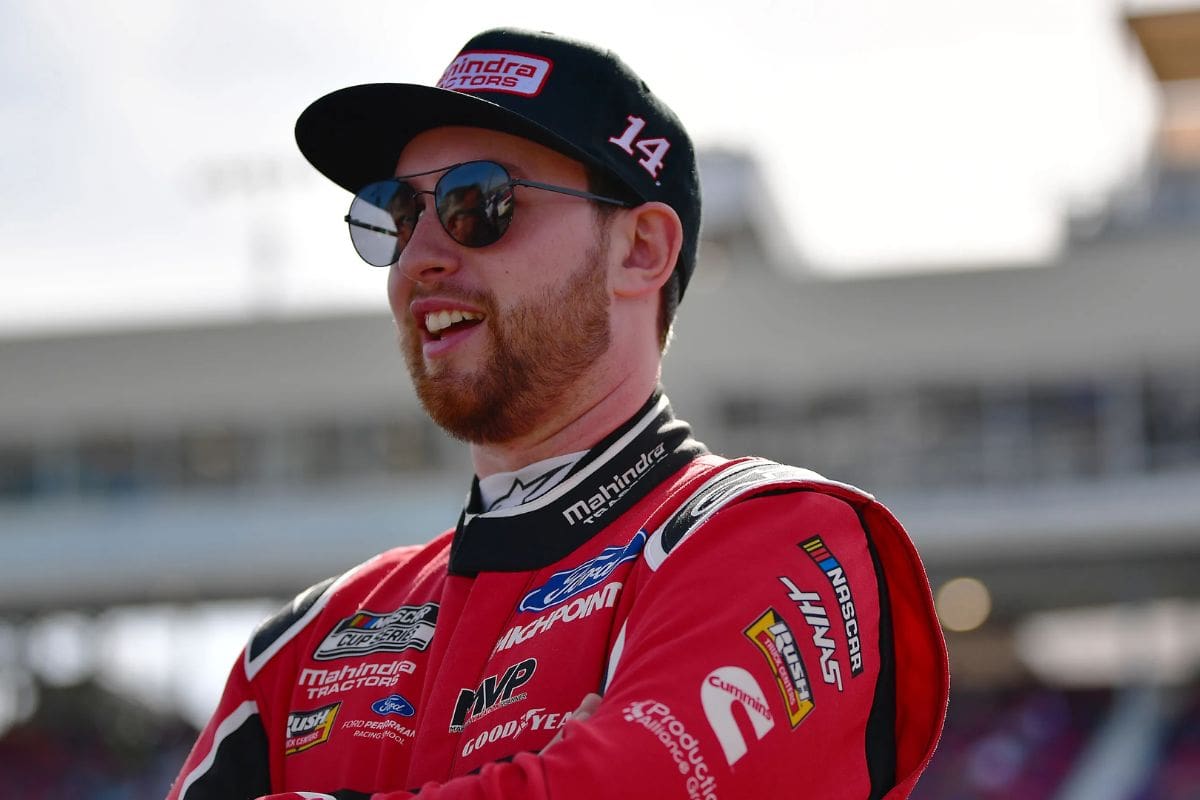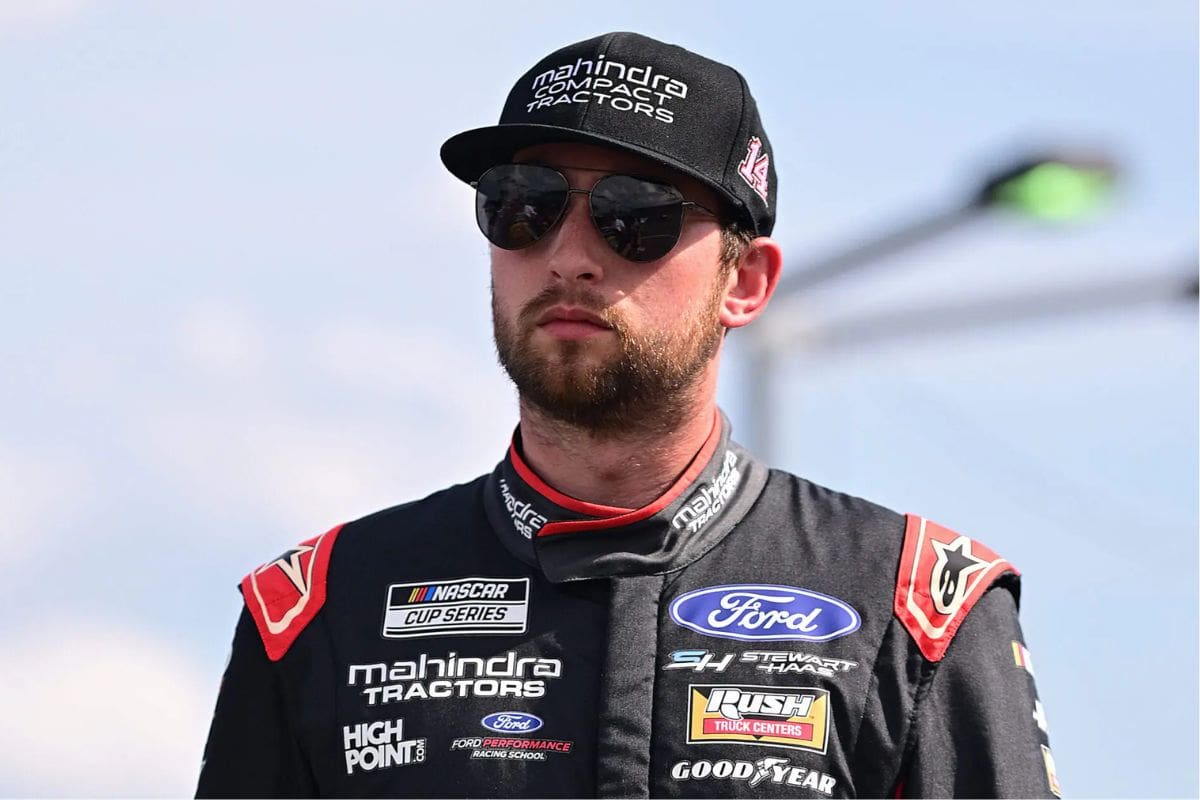Chase Briscoe Fires Back at Wood Brothers: Chase Briscoe‘s recent rebuttal to Jon Wood regarding his shift to Joe Gibbs Racing raises critical questions about transparency and team dynamics within the NASCAR circuit. Briscoe’s assertion that sponsorship did not drive his negotiations highlights a potential rift in communication with Wood Brothers Racing, a factor that could have broader implications for both teams. As Briscoe initiates this new chapter, the balance between leveraging JGR’s resources and maintaining team independence becomes increasingly pivotal. What does this mean for the future of collaboration in the sport?
Key Highlights
- Chase Briscoe clarified that JGR did not require sponsorship commitments, countering Jon Wood’s assertion of financial backing being crucial in negotiations.
- Miscommunication between Briscoe and Wood highlighted the complexities of negotiations, especially regarding sponsorship expectations and team independence.
- Briscoe’s move to JGR emphasizes the competitive advantage and resources available, enhancing his championship prospects.
- Wood Brothers Racing maintains a stance on autonomy while benefiting from technical alliances with Team Penske, raising questions about operational independence.
Chase Briscoe’s Team Change
Chase Briscoe’s change from Stewart-Haas Racing to Joe Gibbs Racing marks a notable shift in his career path, reflecting the competitive dynamics of NASCAR and the allure of aligning with a top-performing team. This alteration emphasizes the tactical importance of driver-team alignment in a sport where performance and resources are vital to success.
With SHR’s impending departure and the uncertainty surrounding its future, Briscoe’s decision to join JGR, a team renowned for its competitive edge and consistent championship contention, positions him for greater opportunities.
Briscoe was initially a prime candidate for Wood Brothers Racing, which could have allowed him to remain within the Ford ecosystem. However, JGR’s swift and compelling offer proved irresistible. This move not only improves Briscoe’s prospects for success but also highlights the fluid nature of driver contracts in NASCAR, where timing and opportunity play pivotal roles.
The implications of this switch extend beyond Briscoe’s career; they also reflect the ongoing rivalry among teams to attract top talent. While the Wood Brothers’ proposal was attractive, the allure of joining a powerhouse like JGR ultimately outweighed it for Briscoe.
The competitive landscape is shifting, and tactical decisions like Briscoe’s are vital for drivers aiming to advance their careers. This alteration not only positions Briscoe for immediate impact but also exemplifies the necessity for drivers to navigate their careers astutely within a continuously changing NASCAR environment.
Clarification from Chase Briscoe and Jon Wood
Amid the backdrop of Briscoe’s move to Joe Gibbs Racing, clarifications have emerged regarding the dynamics between him and Wood Brothers Racing, showing the complexities of sponsorship negotiations in NASCAR. The exchange has highlighted key issues that are often obscured in the competitive world of motorsports.
“There was some misconception when Chase Briscoe did his presser (at Joe Gibbs Racing), and he mentioned they were the only team who didn’t ask him to bring money. That’s not true. I don’t know if he forgot or he imagined a piece that didn’t happen. And this isn’t me being critical; maybe he just thought we did.” – Wood
- Sponsorship Dynamics: Chase Briscoe asserted that JGR was the only team not requiring sponsorship commitments, a claim that triggered a response from Jon Wood, who clarified that this assertion was misleading. Wood emphasized that financial backing is a vital topic in driver negotiations, highlighting the need for clarity in such discussions.
- Contrasting Perspectives: Jon Wood’s counterpoint indicated that the Wood Brothers did not, in fact, pressure Briscoe for sponsorship funds, contrary to his statements. Wood mentioned the signing of Josh Berry, who lacks substantial sponsorship, as evidence that financial backing was not the sole consideration in their decisions.
- Communication Gap: The public exchange suggests a potential disconnect between the two parties’ perceptions of their negotiations. Wood’s remarks imply that Briscoe might have misremembered or misinterpreted the discussions surrounding sponsorship demands.
Chase Briscoe’s Public Response
In an effort to clarify the situation and prevent further misunderstandings, Briscoe took to social media to address the statements made by Jon Wood regarding their negotiations and sponsorship dynamics. By engaging directly with fans and critics alike, Briscoe aimed to dispel any misconceptions that may have arisen from Wood’s remarks. His response, shared on a Reddit thread, succinctly summarized his perspective: “Pretty much what happened.” This approach not only showcased his willingness to communicate openly but also reflected a desire to maintain transparency in a complex and often murky arena.
Briscoe’s public stance is particularly significant given the backdrop of his team’s struggles to keep key personnel, such as crew chief Rodney Childers and driver Josh Berry, aligned with their tactical vision. The challenge of retaining talent while managing sponsorship expectations is a delicate balancing act, one that Briscoe recognized in his response. He refrained from escalating tensions, emphasizing instead a commitment to collaboration and clarity.
Moreover, by addressing the situation head-on, Briscoe displayed a proactive leadership style that resonates with both fans and industry stakeholders. His focus on factual discourse serves to raise the conversation beyond mere speculation, fostering an environment conducive to understanding. In a sport where narratives can quickly spiral out of control, Briscoe’s measured approach is a reminder of the importance of direct communication and accountability in motorsports.
WBR’s Technical Alliances and Independence
The dynamics of Wood Brothers Racing’s (WBR) operations reveal a complex interplay between their specialized alliances and the assertion of independence, particularly in view of their partnership with Team Penske. While this technical collaboration affords WBR access to valuable resources and expertise, it simultaneously raises questions about the influence of Penske on WBR’s tactical decisions.
“There are some really, really, really good people at Team Penske. And if we pull from internally there for a crew chief, there is no reason Josh can’t run as good as the 12, the 2 and the 22.”
“Some people still think Roger owns our charter or owns part of it. We own that thing entirely.” – team president
The relationship manifests in several significant ways:
- Resource Sharing: WBR benefits from Penske’s advanced engineering and operational resources, enhancing their competitive edge on the track.
- Decision-Making Influence: The presence of Penske leadership in decision-making processes can limit WBR’s autonomy. For example, the inability to hire Rodney Childers reflects a hierarchy that may prioritize Penske’s preferences over WBR’s independent choices.
- Public Perception of Ownership: Despite explicit statements affirming WBR’s ownership of its charter, misconceptions persist regarding Penske’s stake in the team. This confusion highlights the delicate balance WBR must maintain between leveraging partnerships and asserting their autonomy.
WBR’s assertion of independence is further complicated by the perception that they are heavily influenced by their partner. While they possess ownership and operational control, the implications of their alliances can blur the lines of autonomy, ultimately shaping the team’s identity within the competitive landscape of NASCAR.
Impact of Team Penske’s Influence
Team Penske’s influence on Wood Brothers Racing manifests greatly in tactical decisions, raising questions about the extent of WBR’s operational independence within the competitive NASCAR landscape. This dynamic highlights a nuanced relationship where strategic guidance from Team Penske often overshadows WBR’s traditional role as an independent racing entity. The implications of this influence can profoundly affect performance outcomes and team morale.
As WBR navigates the complexities of the NASCAR circuit, the question remains: to what extent can they assert their identity? The overarching influence of Team Penske serves both as a resource and a potential constraint, complicating the narrative of independence that WBR seeks to maintain. Understanding this dynamic is vital for stakeholders who wish to grasp the intricate fabric of team relationships within NASCAR.
News in Brief: Chase Briscoe Fires Back at Wood Brothers
Chase Briscoe’s shift to Joe Gibbs Racing demonstrates the intricate dynamics of sponsorship and team independence within NASCAR.
The clarification regarding the negotiations shows the necessity for transparent communication in the sport.
Furthermore, the implications of this move accentuate the delicate balance between leveraging resources and maintaining team autonomy, particularly in view of Wood Brothers Racing’s specialized alliances.
Ultimately, the ongoing discourse surrounding these developments reflects broader themes of competition and collaboration within the NASCAR ecosystem.
ALSO READ: Chase Briscoe Struggles for His Playoff Position After Joining Joe Gibbs Racing



